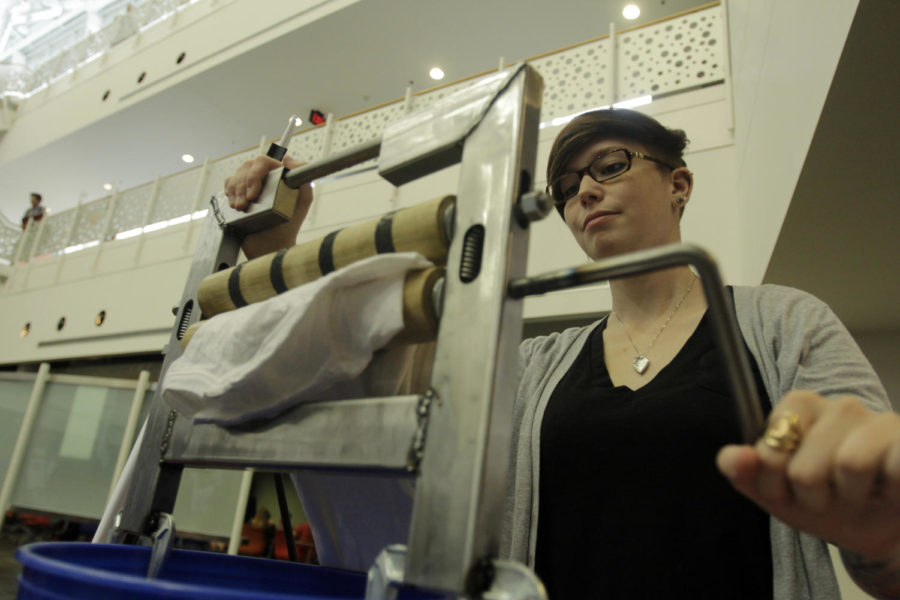Students showcase semester projects at Mechanical Engineering Design Expo
Kyle Schlichting/Iowa State Daily
Lindsay Beery, junior in electrical engineering, shows off her RollTech device “The Cyclone” at the Design Expo. The Expo took place at Howe Hall on Wednesday and featured design projects by students in mechanical, aerospace and other engineering majors.
April 30, 2014
Students in mechanical engineering displayed the work they put into their semester projects at the Mechanical Engineering Design Expo on April 29 in Howe Hall.
Design is a major component of mechanical engineering education at Iowa State, said William Morrow, assistant professor in mechanical engineering and co-creator of the expo.
The projects for students in Mechanical Engineering 270, ME 415 and ME 466 were displayed by 270 students and were aimed to support economic activity in developing regions.
Jovani Rubio, junior in mechanical engineering, and John Sievert, sophomore in mechanical engineering, created a product called H2O On-The-Go.
“It creates a way to transport water into Dadaab, Kenya, a refugee camp. They typically walk over two and a half miles to get to a water source,” Sievert said.
Sievert said this takes a great deal of Dadaab people’s time. The idea behind their product was to reduce the amount of time it takes for them to get water.
Their product also scales down the amount of physical stress it takes to transport water. Sievert also said most of these people transport water by carrying five-gallon barrels on top of their heads.
Their product creates an alternative way to transport water by placing a jug of water into a wheelbarrow-type mechanism.
“We figured if they rolled it, the water itself would help to gain momentum while they are pushing it, while also relieving the stress off their neck and head,” Sievert said.
Sievert said there are competitors that make a similar product, but at a much higher cost.
“Our goal was to cut down the time it takes these people to transport water by at least 25 percent, and we met that goal,” Rubio said. “Our product also has great durability. We tested it on a treadmill for a few miles.”
ME 415 projects are industry-sponsored projects that give students a hands-on experience with solving applied industrial problems.
Brett Cowen, senior in mechanical engineering, and Tria Vang, senior in mechanical engineering, worked through Vermeer Manufacturing Company for their project.
“The end goal was to get a software testing device and simulator for their horizontal directional drilling,” Cowen said.
Cowen and Vang created the base structure of which the cab for the drilling device simulator will be placed on top of. They worked with another group who created other components of the simulator.
The base structure also has a space available to mount the TV screens that will show the simulated drilling.
Cowen said the base is designed so that the screen will be located in the same place that the operator would be looking out of the drilling device.
“This product has been fully tested and has proven to successfully be able to hold the weight of the device,” Cowen said.
Cowen said he and Vang worked on this project all semester and went through many different brainstorming and execution processes in order to come to a final product.
ME 466 projects connect mechanical, electrical and aerospace engineers in the solution of a single, design problem.
In previous years, some extracurricular groups participate in the ME Design Expo to showcase their work, but none are participating this year, Morrow said.

















